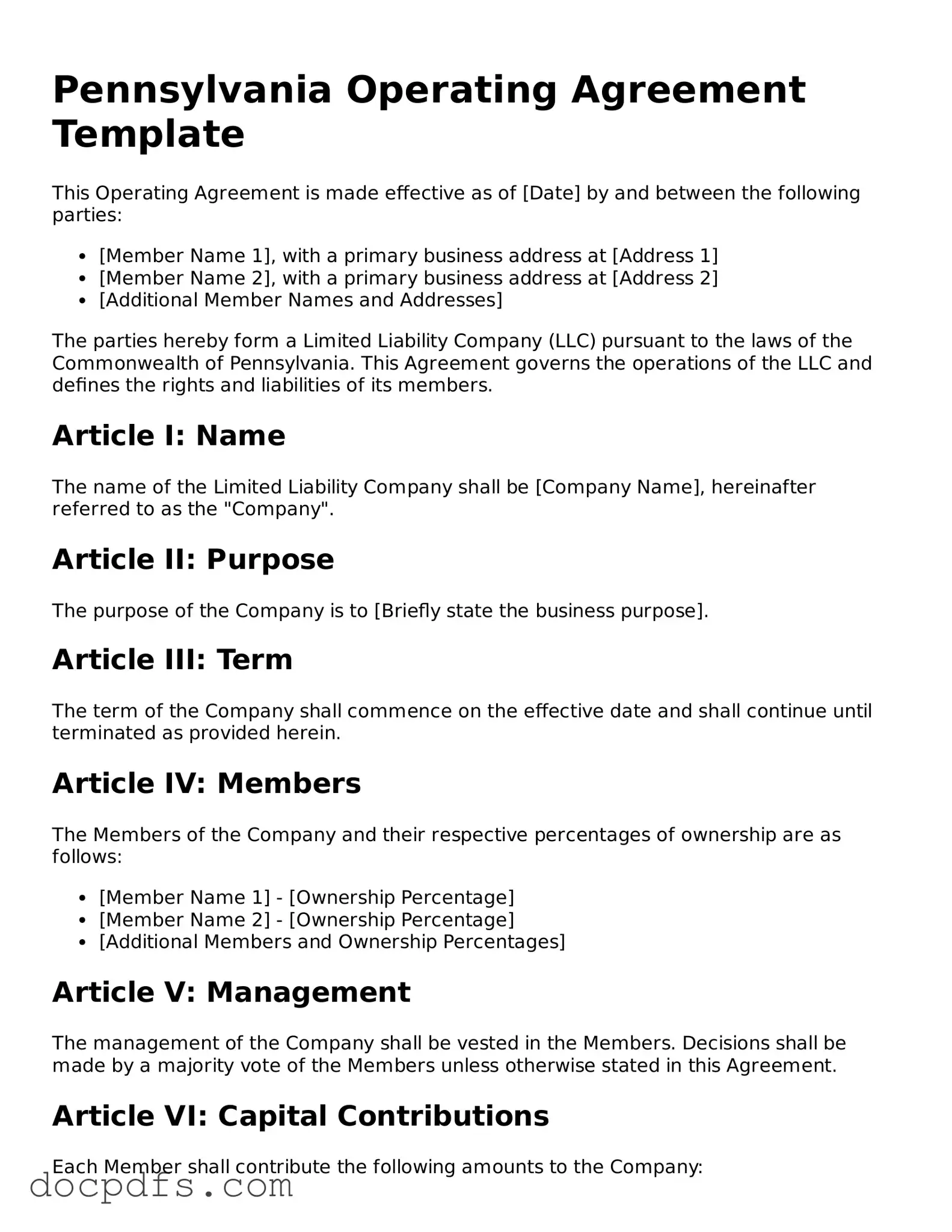What is a Pennsylvania Operating Agreement?
A Pennsylvania Operating Agreement is a legal document that outlines the management structure and operational procedures of a limited liability company (LLC) in Pennsylvania. This agreement serves as a foundational document that governs the relationships among the members of the LLC and helps to define the roles and responsibilities of each member.
Is an Operating Agreement required in Pennsylvania?
While Pennsylvania law does not mandate that LLCs have an Operating Agreement, it is highly recommended. Having this document in place can help prevent misunderstandings among members, establish clear guidelines for decision-making, and provide a framework for resolving disputes. Without it, the LLC may be subject to default rules set by state law, which may not align with the members' intentions.
What should be included in a Pennsylvania Operating Agreement?
A comprehensive Operating Agreement should address several key components, including:
-
Member Information:
Names and addresses of all members.
-
Management Structure:
Details on whether the LLC will be member-managed or manager-managed.
-
Capital Contributions:
Initial contributions made by each member and any future funding requirements.
-
Profit and Loss Distribution:
How profits and losses will be allocated among members.
-
Voting Rights:
Procedures for decision-making and voting thresholds.
-
Transfer of Membership Interests:
Guidelines on how members can transfer their ownership interests.
-
Dissolution Procedures:
Steps to take if the LLC needs to be dissolved.
Can an Operating Agreement be modified?
Yes, an Operating Agreement can be modified. Members of the LLC can amend the agreement as needed, provided that the changes are agreed upon by all members. It is advisable to document any amendments in writing to maintain clarity and avoid future disputes.
How does an Operating Agreement protect members?
An Operating Agreement offers several protections for members of an LLC. It clearly defines each member's rights and responsibilities, reducing the likelihood of conflicts. Additionally, it can limit personal liability for business debts, ensuring that members are not personally responsible for the LLC's obligations, as long as they adhere to legal and operational guidelines.
Do I need a lawyer to create an Operating Agreement?
While it is not legally required to hire a lawyer to draft an Operating Agreement, consulting with a legal professional is often beneficial. A lawyer can provide valuable insights tailored to your specific business needs, ensuring that the agreement complies with state laws and addresses all necessary aspects of your LLC's operations.
Where can I find a template for a Pennsylvania Operating Agreement?
Templates for Pennsylvania Operating Agreements can be found online through various legal websites, business formation services, and state resources. However, it is important to ensure that any template used is compliant with Pennsylvania laws and reflects the specific needs of your LLC. Customizing a template to fit your unique situation is often the best approach.
